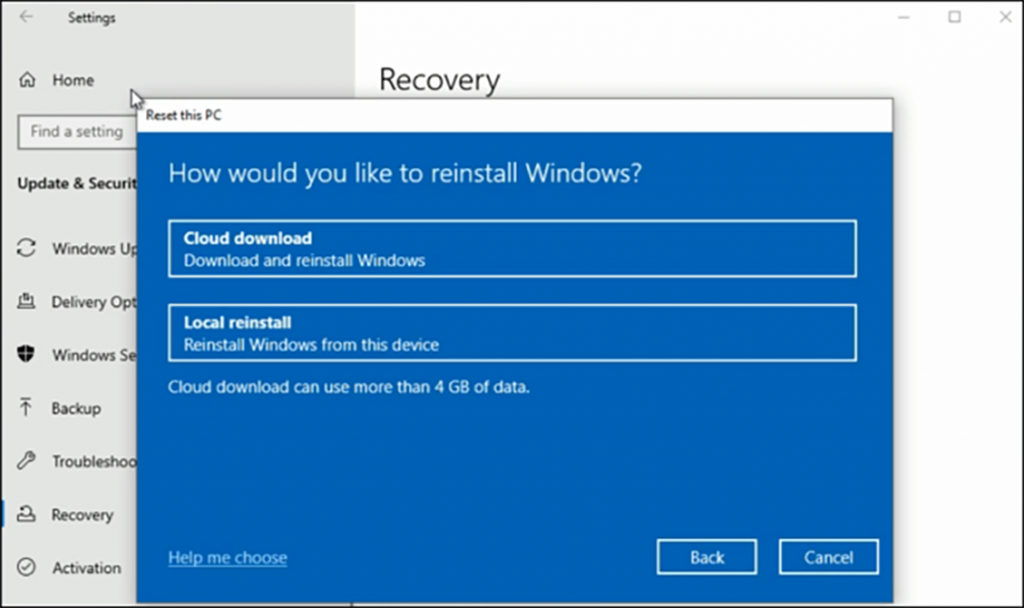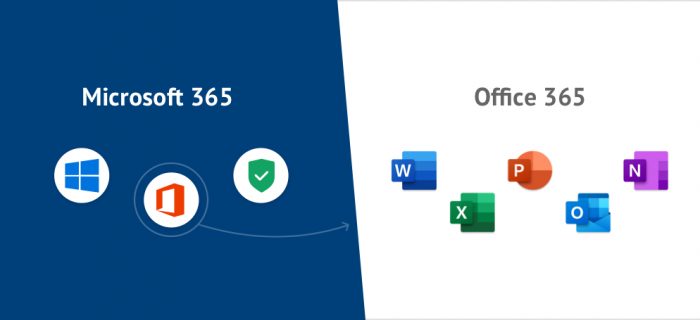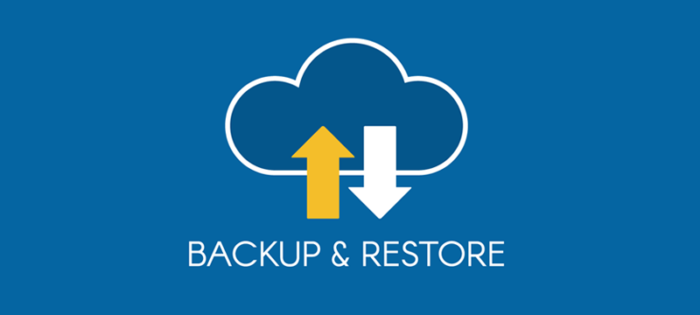Microsoft is experimenting with a new Windows 10 cloud restore feature, as reported by numerous tech journalists. At this point, there aren’t a lot of details regarding this new cloud restore feature. We do know that the option to utilize it will appear during device recovery.
Table of Contents
What to Expect From the Cloud Restore

The Windows 10 cloud restore feature is similar to that of Apple’s and not too difficult to navigate.
We expect that the Windows 10 cloud restore feature will work similarly to the way the restore feature works on Mac OS. The restore features will let users download a new copy of the Windows 10 OS to the machine over the internet. This could have a wide array of applications and issues.
It’s suspected that Microsoft might be developing this feature for both Windows 10 Lite and Windows 10 core. Both operating systems would need a lighter, more straightforward version of recovery. Though this still poses other questions.
Windows 10 Lite is expected to be Microsoft’s answer for Chrome OS. Chrome OS has a feature called Power Wash. At any time, users can wipe Chrome OS clean and re-sync all their data back to the machine. Since Chrome OS syncs user data and profiles to Google’s cloud services, this process is straightforward and fast. Microsoft already has similar options with OneDrive and Microsoft accounts. It would be expected that using this Windows 10 cloud restore feature might work much like Power Washing does for Chrome OS.
That still leaves other questions, though. How Is Microsoft going to handle this in enterprise environments? Microsoft already has a product called Windows Deployment Server (WDS). WDS lets organizations create a master image that includes applications, policies, and settings. That master image is then stored on a deployment server. At deployment time, the IT department within a business can connect a device to the network and image it through a PXE environment. This has been a standard deployment tool within the Microsoft ecosystem for many years.
What is Microsoft’s Plan?

Microsoft might be rolling out the Windows 10 cloud restore feature in hopes of adding it to its 365 families.
Microsoft could be bolstering this service for their suspected Microsoft 365 service expected to debut in the future. The Microsoft 365 service is expected to change how organizations, both big and small, handle IT. This new subscription model would allow businesses to not only lease hardware through Microsoft but also lease deployment tools as well. Microsoft would take creating the master image for devices, as well as deployment to those devices. If Microsoft has a cloud deployment feature, that will make it much easier for them to deploy images to customers’ PCs.
The jury is still out on whether Microsoft will make any inroads with this service. After the Microsoft 365 service was leaked, the IT industry and hardware partners alike had a massive outcry against it. Many believe that this Microsoft 365 service may undercut the business IT structure and remove control of IT functions away from the company. As expected, many companies are skeptical about having Microsoft handle all their IT needs.
Problems That May Occur

A few problems may arise when using Microsoft Windows 10 cloud restore, but they should develop patches to fix them as time passes.
Looking back at consumer gadgets, this cloud restore function may also cause an issue for low-end devices, or it may resolve past issues Microsoft has had with them as well. In the past, OEMs have sold devices with only 32-64gbs of storage space. These devices would quickly run out of storage and not be able to accept Microsoft updates. This has posed security issues in the past.
Likewise, Microsoft only supports hardware in Windows 10 for a certain amount of time. Unlike Windows 7, a PC sold only five years ago may not receive major Windows 10 updates. This has been an issue with some of the older Intel I series processors and some AMD CPUs. Some versions of Windows 10 will not install on these older hardware platforms.
It could be assumed that since these devices don’t support newer versions of Windows 10 that they might not be affected by this cloud restore feature. After all, these older devices won’t be able to update a version of Windows 10 that supports it. When Windows 10 launched, Microsoft stated that it would be the last version of Windows released. Instead of releasing significant new versions of Windows every five years, Microsoft would instead put Windows on a rolling update schedule.
This could mean that even though current hardware might support Windows 10 with this cloud restore feature, they may not support future versions of Windows 10 in a couple of years. How will Microsoft handle devices that need to be fixed that do not support the latest release of Windows 10? It could be assumed that this cloud restore feature will only push the newest version of the OS, causing issues.
Wrapping Up
This is all speculation as of now. The Windows 10 cloud restore feature isn’t even publicly available yet, and Microsoft has made no official rollout announcements either. Only time will tell what issues might arise in both the enterprise and consumer environments from this restore feature.
If you’d like to learn more about how the cloud can help your organization, send us a message. If you have any questions or insight about Microsoft’s cloud restore, please leave a comment below.

